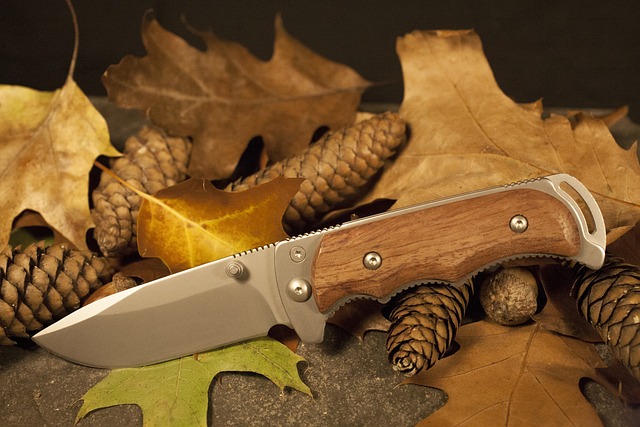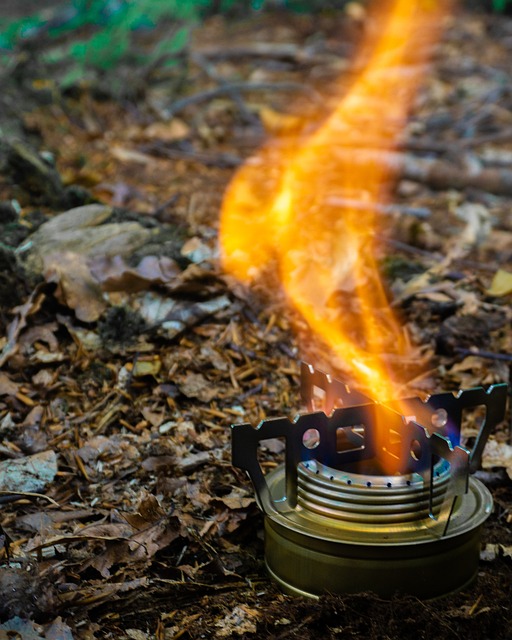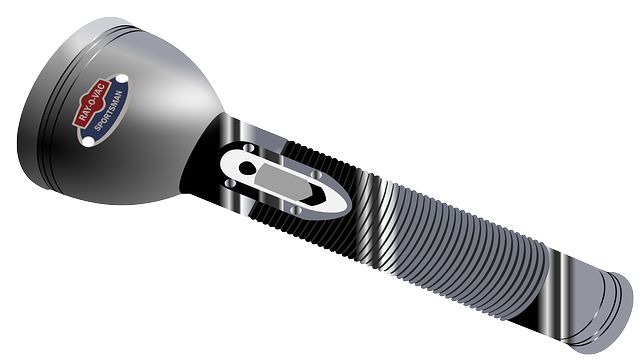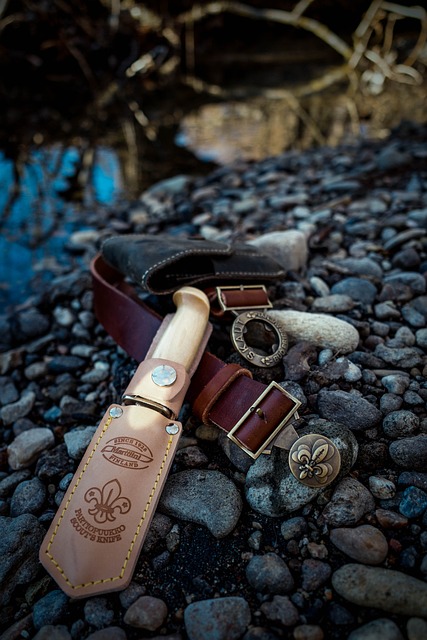When choosing a flashlight for hunting and survival situations, it's imperative to select one that offers high lumen output, long battery life, adaptable lighting settings, and durable construction. A robust design made from materials like aircraft-grade aluminum or heavy-duty plastic with waterproofing is essential for rough outdoor use. Efficiency is key, so opt for models with multiple brightness levels to manage power consumption, and consider LED technology for its longevity and energy efficiency. Advanced features such as strobe, SOS, and EDC settings enhance versatility, while adjustable focus or zoom capabilities improve functionality in various scenarios. Flashlights For Hunting And Survival Situations should be chosen based on their battery type—AA/AAA for convenience or rechargeable lithium-ion for extended use—and should be ergonomically designed for comfort and practicality. These features collectively ensure that your flashlight provides critical visibility and safety in demanding environments, making it an indispensable tool for any outdoor adventure.
In the realm of outdoor activities, from the quiet pursuit of game to the unpredictable demands of survival situations, a reliable light source is indispensable. A power-efficient flashlight for hunting and survival scenarios is not just a tool but a critical component of one’s arsenal, offering safety, visibility, and versatility under the harshest conditions. This article delves into the essential features that make a flashlight suitable for these environments, examines the anatomy of energy-efficient models, explores various battery technologies, and provides practical tips for their use. Additionally, we review top-rated power-efficient flashlights designed specifically for hunting and survival situations, ensuring you are equipped with knowledge to choose wisely.
- Assessing the Importance of Reliable Light Sources in Hunting and Survival Scenarios
- Power-Efficient Flashlight Features: What to Look for in a Survival Situation
- The Anatomy of a Power-Efficient Flashlight: Key Components and Their Roles
- Battery Technologies: Comparing AA, AAA, CR123, and Rechargeable Options
- Practical Applications: How to Utilize Your Flashlight Effectively During Hunting or Survival Trips
- Top Power-Efficient Flashlights for Hunting and Survival: A Review of the Best Models on the Market
Assessing the Importance of Reliable Light Sources in Hunting and Survival Scenarios

In hunting and survival scenarios, a power-efficient flashlight is more than just a convenience; it’s an indispensable tool that can significantly enhance safety and success. The ability to navigate through nocturnal environments with a reliable light source allows hunters to spot game without alerting it to their presence. This is crucial for both stealth and accuracy when taking shots, especially in the early morning or late evening hours. In survival situations, a flashlight’s utility extends beyond hunting; it becomes a critical component for maintaining shelter, preparing food, signaling for help, or simply moving safely through unfamiliar terrain at night. The importance of a light source that can endure the rigors of outdoor use cannot be overstated, as the durability and efficiency of these devices directly correlate with one’s ability to adapt and survive in challenging environments.
When selecting flashlights for hunting and survival situations, it’s imperative to consider lumen output, beam distance, battery life, and overall sturdiness. A high-lumen light can illuminate distant areas or temporarily blind an adversary if necessary, while a long beam distance is vital for scanning the horizon or identifying objects at range. Battery life is also a significant factor; flashlights with energy-efficient LED technology are preferable as they provide extended operation times without the need to frequently replace or recharge batteries. Additionally, flashlights designed with robust materials and impact-resistant features ensure longevity and reliability, making them invaluable assets in any outdoorsman’s kit.
Power-Efficient Flashlight Features: What to Look for in a Survival Situation

When selecting a power-efficient flashlight for hunting and survival situations, durability is paramount. A flashlight built to withstand harsh environments will serve you well in unpredictable conditions. Look for a design made from high-quality, impact-resistant materials such as aircraft-grade aluminum or heavy-duty plastic. This ensures the flashlight can endure drops, bumps, and rough handling without failure. Additionally, waterproofing is crucial; a flashlight that can operate in all weather conditions will provide reliable light when you need it most.
In terms of lighting output, efficiency is key. Flashlights for hunting and survival situations should offer multiple brightness levels to conserve battery life during extended use. A high-intensity setting for critical tasks, a medium setting for general use, and a low-power mode for preserving charge when light is needed sparingly can extend the flashlight’s operational time significantly. LED technology is preferred due to its longevity and energy efficiency compared to older bulb types. Furthermore, consider beam distance and type; a focused beam is ideal for signaling or illuminating distant objects, while a wider beam is better for surrounding area lighting in a camp setup. A flashlight with both options can be incredibly versatile in various survival scenarios. Battery type and capacity are also significant factors; rechargeable lithium batteries offer the best performance in terms of longevity and power output, making them a preferred choice for those who rely on their gear in critical situations.
The Anatomy of a Power-Efficient Flashlight: Key Components and Their Roles

When selecting a flashlight for hunting and survival situations, understanding the anatomy of a power-efficient model is crucial for maximizing its utility in various environments. A high-efficiency flashlight designed for such purposes typically comprises several key components that work synergistically to provide reliable illumination while conserving energy.
At its core, the light source within these flashlights is often a high-intensity discharge (HID) bulb or a highly efficient LED. These sources offer superior brightness and longevity compared to traditional incandescent bulbs. The reflector, another critical component, is engineered to focus the light into a tight beam, enhancing visibility over long distances—a necessity when navigating through the wilderness at night or tracking game in low-light conditions.
The flashlight’s housing is typically constructed from durable materials like aircraft-grade aluminum or high-impact polymer, ensuring both strength and lightweight portability. This design not only protects the internal components from environmental factors but also dissipates heat effectively, preventing overheating and further increasing the device’s operational efficiency.
The battery, often rechargeable lithium-ion or a similarly efficient power source, is chosen for its capacity to hold charge under varying temperatures and its energy density, which allows for a balance between runtime and brightness. A well-designed circuitry system manages power distribution, ensuring that the flashlight operates at optimal performance levels without unnecessary energy waste.
Lastly, the user interface—switches and modes—is ergonomically designed to be easily operable even with gloves or in stressful survival scenarios. Features like pulse monitoring, which alerts users to low battery levels, and energy-saving settings, such as dimming options or strobe functions, further enhance the flashlight’s efficiency and adaptability to various hunting and survival situations.
Battery Technologies: Comparing AA, AAA, CR123, and Rechargeable Options

When venturing into the wilderness or preparing for survival situations, having a reliable flashlight is paramount. The choice of battery technology in your flashlight can significantly impact its performance and longevity. AA and AAA batteries are widely available and are cost-effective options for powering hunting and survival flashlights. They offer robust performance in various weather conditions, making them a go-to for many outdoorsmen. However, their size and energy density do not match the longer burn times and more compact design of rechargeable lithium-ion batteries or the high-energy density of CR123 cells.
CR123 batteries, often favored by those seeking a lightweight and powerful option for flashlights used in hunting and survival situations, boast a greater energy output compared to their AA and AAA counterparts. They are rechargeable but typically offer fewer charge cycles than dedicated rechargeable battery systems. Rechargeable options, such as 18650 batteries, provide an excellent balance between runtime and size, with the ability to be recharged numerous times without significant degradation in performance. These batteries are becoming increasingly popular due to their efficiency, longevity, and sustainability, which aligns well with the principles of responsible outdoor use and survival preparedness. When selecting the best battery technology for your flashlight, consider factors such as weight, availability, runtime requirements, and environmental impact, all of which play a crucial role in ensuring you have a dependable light source when it matters most.
Practical Applications: How to Utilize Your Flashlight Effectively During Hunting or Survival Trips

When venturing into the wild for hunting or survival trips, a reliable flashlight is an indispensable tool. Flashlights for hunting and survival situations must be durable, dependable, and power-efficient to ensure they are available when needed most. During these excursions, visibility can significantly affect your success and safety. A high-quality flashlight can illuminate dark environments, allowing hunters to track game with precision or navigate through unfamiliar terrains at night without giving away their position with overly bright lights that could spook wildlife or compromise one’s concealment.
The practical applications of a power-efficient flashlight in hunting and survival scenarios are manifold. For instance, it can be used to signal for help if lost or stranded, to set up camp without stumbling in the dark, or to inspect traps or equipment. In addition, the beam should be focused enough to light areas of interest while not drawing unnecessary attention. When using your flashlight during such trips, it’s crucial to conserve battery life by turning it on only when necessary and utilizing modes that reduce power consumption without compromising illumination. A flashlight with a long-lasting battery or one that can be powered by rechargeable batteries or even manually with a hand crank is ideal for these situations, ensuring that you have light exactly when you need it. Always consider the type of activities you’ll engage in and select a flashlight that complements those specific needs, whether it’s the steady glow needed for nighttime observation or the concentrated beam required for signaling or close-range tasks.
Top Power-Efficient Flashlights for Hunting and Survival: A Review of the Best Models on the Market

When venturing into the wilderness for a hunting trip or finding yourself in a survival situation, having a reliable and power-efficient flashlight is paramount. These environments often demand durability, efficiency, and functionality from your gear. The best flashlights for hunting and survival situations are not only bright enough to navigate through the darkness but also have features that conserve battery life, ensuring you have light when you need it most. Models equipped with LED technology lead the market, offering lumens of light that rival older, bulkier models while consuming a fraction of the power. Users can expect long-lasting performance from a single charge, with some models boasting up to 200 lumens on high setting and extending battery life through various modes, including a lower-intensity setting ideal for preserving power in critical moments.
The top flashlights designed for hunting and survival are often constructed with hard-anodized aluminum bodies, making them both lightweight and impact resistant. They are also waterproof, which is essential when used in unpredictable weather conditions. Additionally, these high-quality flashlights come with various modes such as strobe, SOS, and EDC (Everyday Carry) settings, offering versatility for different scenarios. Features like adjustable focus, zoom capabilities, and secure grip designs further enhance their practicality. When it comes to selecting the best model, consider factors like battery type (AA/AAA or rechargeable lithium-ion), runtime, beam distance, and whether you prefer a handheld design or something that can be mounted on a weapon or gear. The most power-efficient flashlights for hunting and survival situations are not just tools; they are critical allies in the field, ensuring visibility and safety when every moment counts.
In conclusion, a reliable power-efficient flashlight is an indispensable tool for both hunting and survival scenarios. Understanding the key components of a durable flashlight, such as its battery technology and design, ensures you have a dependable light source when venturing into the wilderness. Whether you opt for traditional batteries like AA or AAA, or rechargeable options like CR123, your choice should align with the power-efficiency demands of your specific needs. The top flashlights designed for hunting and survival situations excel in both performance and longevity, providing users with clarity and safety when navigating the outdoors under the cover of darkness. With the right flashlight at hand, hunters and survivors alike can enhance their experiences, turning night into day and making the unpredictable predictably manageable.
